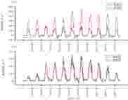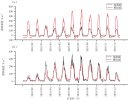Dear all,
I have successfully simulated the near-surface latent heat flux and latent heat flux through CLM5.0, and now it involves the improvement of the parameterization scheme, but I have not yet figured out how to start.Under this folder /es01/paratera/sce0489/cesm2.2/my_cesm_sandbox/components/clm/src/biogeophys,Which specific file do I need to modify? Are there any good suggestions, thank you, my simulation results are shown in the attached picture.
I have successfully simulated the near-surface latent heat flux and latent heat flux through CLM5.0, and now it involves the improvement of the parameterization scheme, but I have not yet figured out how to start.Under this folder /es01/paratera/sce0489/cesm2.2/my_cesm_sandbox/components/clm/src/biogeophys,Which specific file do I need to modify? Are there any good suggestions, thank you, my simulation results are shown in the attached picture.


